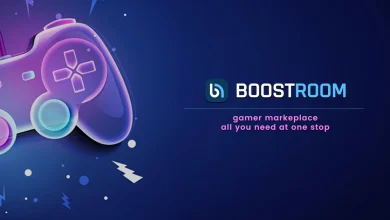Carding on BriansClub cm: A Closer Look at the Tactics and Techniques

Table of Contents
ToggleIntroduction
Carding, also known as credit card fraud, is a prevalent form of cybercrime that involves the unauthorized use of stolen credit card information for financial gain. One notorious platform that has gained significant attention in the cybercriminal underground is BriansClub cm. BriansClub cm is a dark web marketplace where stolen credit card data is bought and sold.
In this article, we will take a closer look at the tactics and techniques used in carding on BriansClub cm. We will explore how cybercriminals obtain credit card information, the methods they employ to evade detection, and the potential consequences of their actions. It is important to note that the information presented here is for educational purposes only and does not condone or promote any illegal activities.
Understanding Carding
Carding involves the process of obtaining credit card information, such as card numbers, expiry dates, and CVV codes, and using this information to make unauthorized transactions or sell it on underground marketplaces. Cybercriminals involved in carding employ various tactics and techniques to carry out their activities while minimizing the risk of being caught.
Tactics and Techniques Used in Carding on BriansClub cm
1. Data Breaches and Compromised Websites
One common method used by cybercriminals to obtain credit card information is through data breaches and compromised websites. They exploit vulnerabilities in systems to gain unauthorized access to databases containing sensitive information. Once they have access, they extract credit card data and sell it on platforms like BriansClub cm.
2. Skimming and Shimming Devices
Skimming and shimming devices are physical tools used to steal credit card information. Skimming devices are typically placed on ATMs, payment terminals, or gas pumps to capture card data when the card is swiped. Shimming devices, on the other hand, are inserted into the card slot to intercept the EMV chip data. The stolen data is then used for fraudulent activities, including carding on platforms like briansclub bin.
3. Phishing and Social Engineering
Phishing is a technique used to trick individuals into providing their credit card information willingly. Cybercriminals send deceptive emails or create fake websites that mimic legitimate ones. They often pose as reputable organizations and request users to enter their credit card details. Once the information is provided, it is used for unauthorized transactions or sold on underground marketplaces.
4. Malware and Keyloggers
Malware and keyloggers are malicious software programs that infect devices to capture credit card information. Malware can be distributed through malicious links, email attachments, or infected websites. Once installed, it runs in the background, capturing keystrokes and obtaining sensitive information, including credit card details. This stolen information can then be used for carding purposes.
5. Virtual Private Networks (VPNs) and Proxies
To evade detection and protect their identities, cybercriminals often use virtual private networks (VPNs) and proxies. These tools mask their IP addresses, making it difficult for law enforcement agencies and cybersecurity professionals to trace their activities back to them. By using VPNs and proxies, carders can operate anonymously on platforms like BriansClub cm.
6. Money Laundering Techniques
Once cybercriminals have successfully obtained credit card information and made unauthorized transactions, they need to convert the stolen funds into untraceable forms. Money laundering techniques, such as mixing stolen funds with legitimate ones, using cryptocurrency exchanges, or employing offshore bank accounts, are commonly used by carders to obfuscate the origins of the illicit funds and avoid detection.
Consequences of Carding
Carding not only affects individuals whose credit card information is stolen but also has broader consequences for financial institutions, merchants, and society as a whole. Some of the consequences include:
1. Financial Losses
Individuals who fall victim to carding can suffer significant financial losses. Unauthorized transactions made using their credit card information can lead to drained bank accounts, damaged credit scores, and a lengthy process of recovering stolen funds.
2. Reputation Damage
Financial institutions and merchants whose systems are compromised by cybercriminals face reputational damage. Customers may lose trust in their ability to protect sensitive information, leading to a loss of business and a damaged brand image.
3. Increased Security Costs
As carding continues to evolve, financial institutions and merchants must invest in enhanced security measures to protect against cybercriminal activities. This includes implementing advanced fraud detection systems, conducting regular security audits, and training employees to recognize and respond to potential threats.
4. Law Enforcement Efforts
Carding is illegal in most jurisdictions, and law enforcement agencies worldwide are actively working to identify and apprehend individuals involved in these activities. The investigation and prosecution of carders require significant resources, including specialized cybercrime units and cooperation between international law enforcement agencies.
Combating Carding
Efforts to combat carding and reduce its impact on individuals and organizations involve a multi-faceted approach that includes the following:
1. Stronger Security Measures
Financial institutions and merchants must implement robust security measures to protect customer data. This includes encryption of sensitive information, two-factor authentication, and regular security audits to identify and patch vulnerabilities.
2. User Education
Raising awareness among users about the risks and consequences of carding is crucial. Educating individuals about phishing techniques, the importance of secure online practices, and how to detect and report suspicious activities can help prevent them from falling victim to carding schemes.
3. Collaboration and Information Sharing
Law enforcement agencies, financial institutions, and merchants need to collaborate and share information to identify and track cybercriminals involved in carding. Sharing intelligence and implementing real-time monitoring systems can help detect and mitigate carding activities more effectively.
4. Enhanced Fraud Detection Systems
Developing and implementing advanced fraud detection systems can help identify suspicious transactions and patterns indicative of carding activities. Machine learning algorithms and artificial intelligence can be employed to analyze vast amounts of data and detect anomalies that may indicate fraudulent behavior.
5. Legislation and International Cooperation
Governments should enact legislation that specifically addresses carding and cybercrime, providing law enforcement agencies with the necessary tools to investigate and prosecute offenders. International cooperation among law enforcement agencies is also vital to ensure that cybercriminals involved in carding cannot operate with impunity across borders.
6. Continuous Monitoring and Adaptation
Carding techniques constantly evolve, and cybercriminals find new ways to exploit vulnerabilities. Therefore, continuous monitoring of emerging trends and adapting security measures accordingly is crucial to stay one step ahead of carders.
Conclusion
Carding on platforms like Briansclub cm remains a significant threat to individuals, financial institutions, and merchants. Cybercriminals employ various tactics and techniques to obtain credit card information, evade detection, and profit from their illicit activities. Combating carding requires a multi-faceted approach involving stronger security measures, user education, collaboration, enhanced fraud detection systems, legislation, and continuous monitoring. By taking these steps, we can work towards mitigating the impact of carding and protecting individuals and organizations from financial loss and reputational damage.



